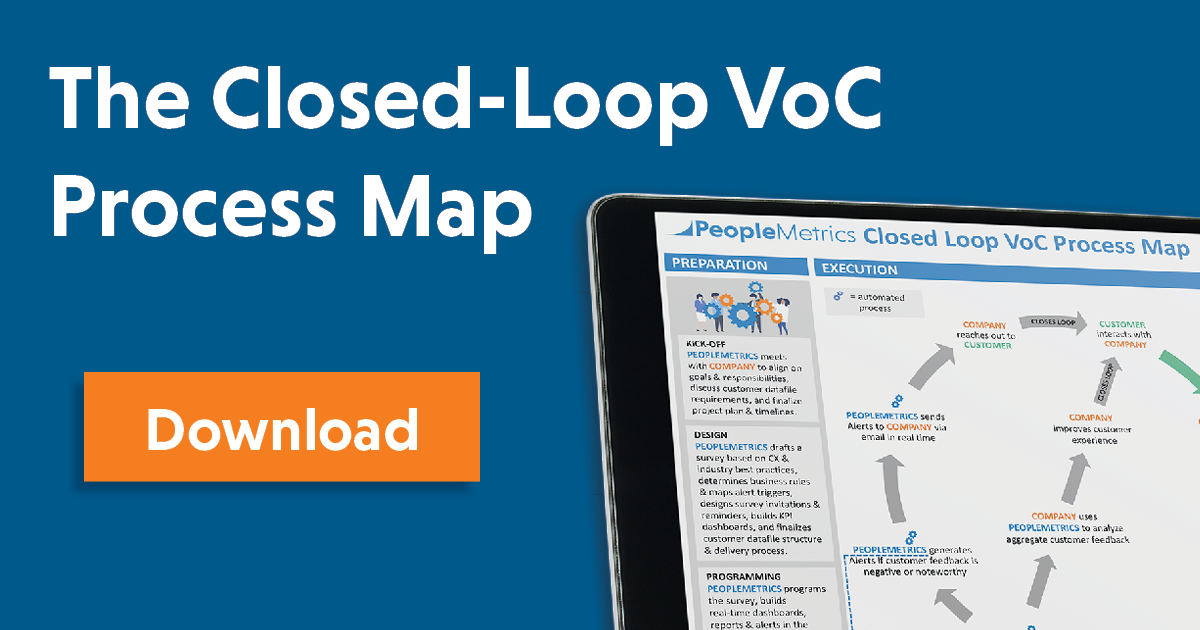Closing the loop arguably drives the greatest ROI with VoC programs.
Here's how it works: when an individual customer has a problem, the front line of the operation is notified and can follow up to make things right.
In other words, operators are able to “close the loop” with the customer, resolve any issues, and reduce the chance of churn.
Closing the loop may not sound like a big deal, but fifteen years ago, when CX measurement was owned by market research, this kind of individual customer feedback was not reported on — and it wasn’t shared with the employees who could respond to the feedback and resolve issues.
Today, customer-facing teams know when a customer has a problem, and they’re able to use workflows in their VoC software platform to close the loop.
The ability to immediately follow up and resolve customer issues is reason enough to invest in VoC. And indeed, that's why many companies do invest... and you should too!
What is "Closing the Loop"?
In its most basic form, "closing the loop" means that your VoC software platform “alerts” people within the organization when something (usually negative) happened during the last customer experience.
These alerts or notifications summarize the issue and often provide suggestions about what should be done next.
Download: The Closed-Loop VoC Process Map
Real-time alerts are integral to VoC. They let the company know about problems in real time and why they’re occurring. Most importantly, they allow employees to follow up directly with the customer.
With real human conversations happening between the company and the customer, issues can be resolved. That might look like anything from a sincere apology to a discount or full refund.
Believe it or not, even these days, many businesses do nothing when a customer indicates there is an issue! So if you commit to closing the loop with customers, you will easily differentiate your company in the marketplace.
In my experience, loop closing makes transactional VoC the anti-market research. When I first started in this business, PeopleMetrics was one of the first companies to issue alerts based on individual customer experiences. The market research community did not get it or like it.
Our clients, however, loved it. They started to see value in VoC—not just once or twice a year, but every single day!
Stay Tuned...
In my next blog post, we will do a deep dive on the types of alerts that can be generated and how to respond to them. Stay tuned!
Sean McDade, PhD is the author of Listen or Die: 40 Lessons That Turn Customer Feedback Into Gold. He founded PeopleMetrics in 2001 and is the architect of the company’s customer experience management (CEM) software platform. As CEO, he guides the company’s vision and strategy. Sean has over 20 years of experience helping companies measure and improve the customer experience. Earlier in his career, he spent five years at the Gallup Organization, where he was the practice leader of their consulting division. His company offers CEM software with advanced machine learning solutions and hands-on analytical support to help companies make sense of their CX data. Sean holds a Ph.D. in Business Administration with a specialization in marketing science from Temple University in Philadelphia. He has published eight articles in peer-reviewed scholarly journals and has taught over 25 marketing classes. Sean was named a 40 under 40 award recipient of the Philadelphia region. He is an active Angel Investor, including investments in Tender Greens, CloudMine and Sidecar.
Topic: Alert Management






%20(1).png)